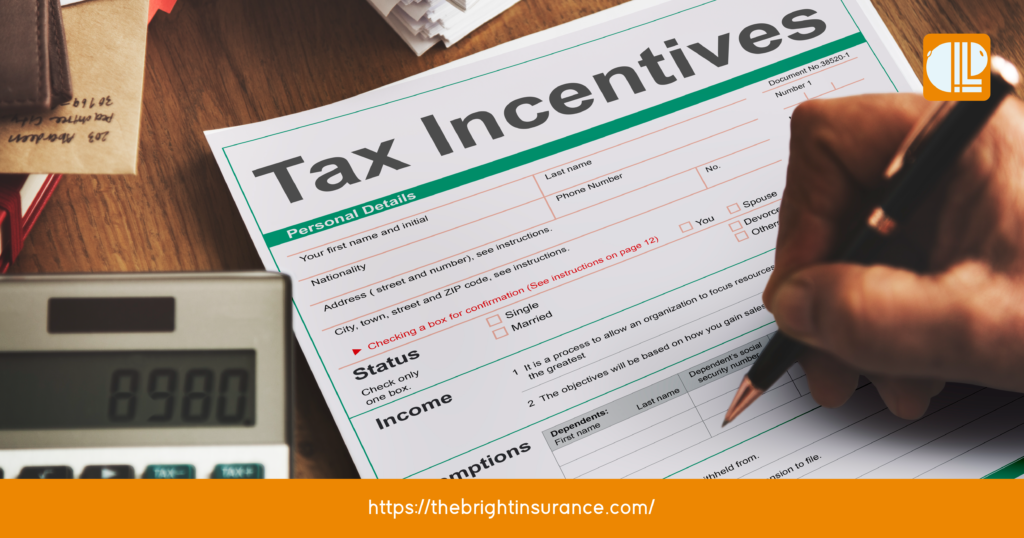Introduction
Building wealth through real estate investing is a well-established strategy for achieving financial freedom. By leveraging property as an asset, investors can create multiple income streams. Additionally, they can increase their net worth and even retire early. Whether you are an experienced investor or just starting, understanding various real estate methods can greatly impact your financial future. Therefore, this article explores six proven methods for achieving long-term wealth through real estate investing.
1. Profiting from Rental Properties
Investing in rental properties is a popular and effective method for building wealth in real estate. To start, buying properties and renting them out can generate a steady income stream. Importantly, location is crucial for success with rental properties. By selecting a property in a desirable area with strong rental demand, you ensure consistent cash flow.

Furthermore, rental income can grow over time while your mortgage payments remain stable. Consequently, this leads to higher profits. Additionally, rental properties offer tax benefits, such as deductions for mortgage interest, property taxes, and depreciation.
Key Considerations:
- Location: Choose areas with high demand for rentals.
- Property Management: Consider hiring a manager for daily operations.
- Long-Term Perspective: Focus on appreciation and cash flow over quick gains.
Understanding the tenant market is essential. For example, knowing whether your potential renters are students, families, or professionals can help tailor the property to their needs. Thus, properties near universities suit student housing, while family-friendly neighborhoods are ideal for long-term tenants.
2. Fixing and Flipping Properties
Fixing and flipping properties involves buying undervalued homes, renovating them, and selling them for a profit. This strategy can yield high returns if executed well. Firstly, start by finding undervalued properties needing repairs or updates. Next, renovate them to maximize their value. Finally, sell the property at a higher price to minimize holding costs.

Key Considerations:
- Market Knowledge: Understand the local market for profitable opportunities.
- Renovation Budget: Stick to a budget to avoid overspending.
- Quick Turnaround: Aim to sell the property quickly to cut carrying costs.
A successful fix-and-flip project requires knowing renovation costs and timelines. Therefore, work with reliable contractors and have a clear plan to stay on budget and schedule. Additionally, be aware of market trends and buyer preferences to ensure your renovations appeal to potential buyers.
3. Investing in Real Estate Investment Trusts (REITs)
For those who prefer not to own properties directly, Real Estate Investment Trusts (REITs) are an excellent option. REITs are companies that own, operate, or finance income-producing real estate. By investing in REITs, you gain exposure to real estate markets and earn dividends without managing properties.

Moreover, REITs are publicly traded, making them liquid investments bought and sold on stock exchanges. Thus, this accessibility benefits both beginners and experienced investors.
Key Considerations:
- Diversification: REITs offer exposure to various property types and regions.
- Liquidity: REITs are more liquid compared to physical real estate.
- Dividend Income: REITs must distribute at least 90% of taxable income to shareholders.
Additionally, REITs benefit from professional management. Experienced teams handle properties, ensuring high occupancy rates. Consequently, this provides peace of mind for those preferring a hands-off investment approach.
You might like: Improve Online Presence for Financial Advisors: A Comprehensive Guide
4. The Buy and Hold Approach
The buy and hold strategy involves purchasing property and holding it long-term. This approach relies on the expectation that property values will appreciate over time. During the holding period, you can generate rental income to reinvest or pay down the mortgage.

This strategy works well in markets with strong growth prospects. Therefore, investors who are patient and endure market fluctuations can see substantial returns from appreciation and rental income.
Key Considerations:
- Market Timing: Buy in markets with growth potential.
- Patience: Requires a long-term commitment to see benefits.
- Rental Income: Generate income to offset expenses during the holding period.
The buy and hold strategy benefits from compound growth. As property value increases, the equity can leverage additional investments. Over time, this accelerates wealth-building efforts. Additionally, rising rents can boost cash flow and overall returns. Owning property long-term offers tax advantages, such as deferring capital gains taxes through a 1031 exchange.
5. Leveraging Short-Term Rentals and Airbnb
Short-term rentals, like those listed on Airbnb, offer an opportunity for higher rental income compared to traditional leases. Renting properties short-term allows for higher nightly rates, especially in tourist destinations or high-demand areas.

However, managing short-term rentals involves more effort, including frequent guest turnover, property maintenance, and adhering to local regulations. Despite these challenges, higher returns make short-term rentals attractive.
Key Considerations:
- Location: Choose properties in high-demand areas.
- Management: Consider the effort required for frequent guest turnover.
- Regulations: Be aware of local laws governing short-term rentals.
To succeed, offer a high-quality experience to attract positive reviews and repeat bookings. Maintain the property well, provide essential amenities, and ensure smooth guest communication. Moreover, effective marketing, including professional photography and detailed descriptions, can increase bookings.
6. Exploring Commercial Real Estate Investments
Investing in commercial real estate, like office buildings, retail centers, or industrial properties, provides another path to wealth. Commercial properties often generate higher rental income and longer lease terms than residential properties. Consequently, this stability offers a reliable cash flow source.

Although commercial real estate typically requires more capital upfront, it can yield significant returns. Investors also benefit from property appreciation and tax advantages.
Key Considerations:
- Capital Requirements: Commercial properties often need larger initial investments.
- Tenant Stability: Longer lease terms offer stability and consistent income.
- Market Research: Understand the local commercial real estate market.
Commercial real estate often generates higher income. For example, tenants, such as businesses, pay premiums for well-located properties. Additionally, commercial leases may cover property expenses, reducing the owner’s financial burden.
Bonus Tip: Maximizing Tax Benefits
Real estate investing offers several tax benefits that can enhance returns. Understanding these benefits can reduce taxable income and increase cash flow.

Depreciation:
Allows you to deduct the property’s cost over its useful life. For residential properties, the IRS allows depreciation over 27.5 years. For commercial properties, it’s 39 years. Consequently, this non-cash deduction can lead to significant tax savings.
Mortgage Interest Deduction:
Permits deducting mortgage interest payments for investment properties. Thus, this benefits those who finance purchases with loans.
1031 Exchange:
Enables deferring capital gains taxes by selling one investment property and buying another similar property. This can help grow your portfolio without immediate tax burdens.
Deductions for Property-Related Expenses:
Include property taxes, insurance, maintenance, and management fees. These reduce taxable income from rental properties, increasing overall profitability.
Opportunity Zones:
Offer additional tax incentives, including capital gains tax deferrals and potential tax-free growth if held long-term.
Key Considerations:
- Consult a Tax Professional: Navigating tax benefits can be complex.
- Stay Informed: Keep up with tax law changes and opportunities.
- Record-Keeping: Maintain detailed records of expenses and income.
Also read: Family Financial Advisory Firm: Key Insights for Success
Conclusion
Building wealth through real estate investing is a proven way to achieve financial freedom and long-term success. Whether you choose rental properties, fix-and-flip projects, REITs, or commercial real estate, each method offers unique benefits for growing your portfolio. By carefully considering your options, leveraging tax benefits, and staying informed about market trends, you can maximize your returns. Ultimately, building wealth through real estate investing can provide multiple income streams, increase your net worth, and help you achieve your financial goals.
Frequently Asked Questions
1. What are the best locations for rental property investment?
Best locations include areas with high demand for rentals, good schools, and growing job markets. Research local market trends to find desirable neighborhoods.
2. How much capital is needed to start investing in commercial real estate?
Commercial real estate often requires a larger initial investment compared to residential properties. Assess your financial resources and consider leveraging other investments to meet capital needs.
3. What are the key factors in a successful fix-and-flip project?
Key factors include finding undervalued properties, setting a realistic renovation budget, and having a quick turnaround plan. Market knowledge and careful planning are essential for maximizing returns.
4. How do REITs differ from direct property ownership?
REITs offer indirect real estate investment through publicly traded companies, providing liquidity and diversification without property management responsibilities. Direct property ownership involves hands-on management and higher capital requirements.
5. What tax benefits are available for real estate investors?
Tax benefits include depreciation, mortgage interest deductions, 1031 exchanges, and deductions for property-related expenses. Consult a tax professional to maximize these benefits and stay informed about current regulations.








Interesting article with lots of information
Thanks Alot
The article ‘How Do Investors Build Wealth: Top 6 Ways’ was insightful and engaging. It provided a clear overview of various investment strategies and explained how each can contribute to long-term wealth building. The practical tips and examples made it easy to understand how to start investing wisely and effectively.
Thanks Sam!!!
This article provides great insights into building wealth through investing. I’m interested in learning more about how to balance risk and return. What strategies do experienced investors use to manage risk while still pursuing substantial returns?
Glad you found it useful! Experienced investors often use diversification, risk assessment tools, and a balanced portfolio strategy to manage risk while aiming for substantial returns.
This article provides a clear overview of the strategies investors use to build wealth. I especially found the point about diversification helpful. Are there any lesser-known investment strategies or tips that could be beneficial for someone just starting out in 2024? Thanks for the great advice!
Thank you! For beginners in 2024, consider exploring dollar-cost averaging, investing in index funds, and utilizing tax-advantaged accounts. These strategies can offer a solid start.
I am not sure where youre getting your info but good topic I needs to spend some time learning much more or understanding more Thanks for magnificent info I was looking for this information for my mission
Hey people!!!!!
Good mood and good luck to everyone!!!!!
Wow wonderful blog layout How long have you been blogging for you make blogging look easy The overall look of your site is great as well as the content
Thanks for comment!!
Fantastic site Lots of helpful information here I am sending it to some friends ans additionally sharing in delicious And of course thanks for your effort
I loved as much as you will receive carried out right here The sketch is tasteful your authored subject matter stylish nonetheless you command get got an edginess over that you wish be delivering the following unwell unquestionably come further formerly again as exactly the same nearly very often inside case you shield this hike
Your writing has a way of resonating with me on a deep level. I appreciate the honesty and authenticity you bring to every post. Thank you for sharing your journey with us.
I do trust all the ideas youve presented in your post They are really convincing and will definitely work Nonetheless the posts are too short for newbies May just you please lengthen them a bit from next time Thank you for the post
Your writing has a way of resonating with me on a deep level. I appreciate the honesty and authenticity you bring to every post. Thank you for sharing your journey with us.
I was recommended this website by my cousin I am not sure whether this post is written by him as nobody else know such detailed about my difficulty You are wonderful Thanks
I was recommended this website by my cousin I am not sure whether this post is written by him as nobody else know such detailed about my trouble You are amazing Thanks
I loved as much as youll receive carried out right here The sketch is attractive your authored material stylish nonetheless you command get bought an nervousness over that you wish be delivering the following unwell unquestionably come more formerly again as exactly the same nearly a lot often inside case you shield this hike